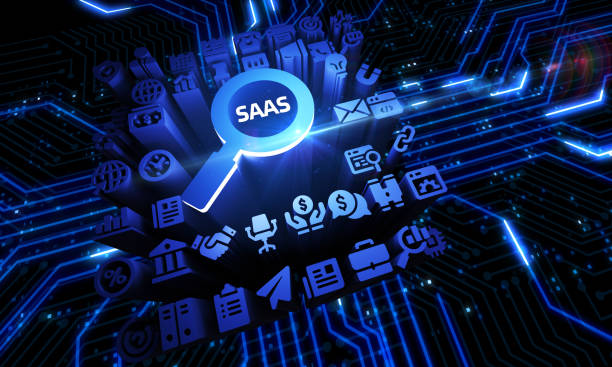
- May 26 2025
- SFI Solution Team
Governing Access Across Integrated SaaS Applications
As organizations increasingly depend on various Software as a Service (SaaS) applications to facilitate their digital operations, the intricacy of managing user access and governance has reached unprecedented levels. From Customer Relationship Management (CRM) systems and Human Resources (HR) platforms to collaboration and financial tools, the current technology stack is highly interconnected, distributed, and—if not adequately secured—susceptible to exploitation.
Governing access across interconnected SaaS applications is no longer a choice; it has become a business necessity. In the absence of a strong access governance strategy, organizations face the risk of data breaches, compliance infractions, and operational inefficiencies.
In this blog, we will examine the challenges, best practices, and contemporary tools that render SaaS access governance both scalable and secure.
Why Access Governance Matters in the SaaS Era
The adoption of SaaS applications has enabled agility and innovation—but also introduced significant risks :
-
Shadow IT leads to untracked and unauthorized applications.
-
Overprivileged users can cause accidental or malicious data leaks.
-
Compliance mandates (like GDPR, SOC 2, HIPAA) require clear access controls and auditability.
-
Integrated apps share data, increasing the attack surface.
Without proper governance, organizations face :
-
Security breaches from orphaned accounts and misconfigured permissions.
-
Data silos that limit visibility and compliance.
-
Operational headaches in onboarding and offboarding users.
Key Challenges in SaaS Access Governance
1. Fragmented Identity Silos
Each SaaS tool often has its own user directory, roles, and permission settings. This fragmentation complicates centralized management and oversight.
2. Lack of Standardization
Access control models vary from app to app—RBAC (role-based), ABAC (attribute-based), or custom roles—making it hard to enforce uniform policies.
3. Inconsistent Integration Patterns
Many organizations integrate apps using APIs or middleware, but these integrations rarely include full user access lifecycle controls.
4. Scalability Issues
Manually managing access across dozens (or hundreds) of SaaS tools doesn’t scale as organizations grow.
5. Poor Visibility & Auditing
Most SaaS platforms offer limited or inconsistent auditing features, making it hard to monitor access or generate compliance reports.
Best Practices for Governing Access Across Integrated SaaS Applications
1. Implement Centralized Identity and Access Management (IAM)
Use enterprise-grade IAM solutions like Okta, Azure AD, or Ping Identity to centralize identity provisioning and authentication. IAM platforms enable :
-
Single Sign-On (SSO) for seamless and secure access
-
Multi-Factor Authentication (MFA) to reduce credential-based attacks
-
Policy-based access control across connected apps
2. Adopt a Zero Trust Security Framework
Zero Trust enforces the principle: “Never trust, always verify.”
Apply Zero Trust to SaaS governance by :
-
Continuously validating user identity and device posture
-
Limiting access to the least privilege necessary
-
Monitoring real-time access patterns and flagging anomalies
3. Automate User Lifecycle Management
Integrate HRIS or ITSM tools (like Workday, BambooHR, or ServiceNow) with your IAM system to automate :
-
Provisioning : Granting access upon hiring or role changes
-
Deprovisioning : Revoking access immediately upon termination
-
Role updates : Automatically adjusting permissions during internal transfers
4. Define and Enforce Standard Roles & Policies
Establish a unified role catalog that maps user roles to application access permissions. Ensure :
-
Roles are reviewed regularly
-
Access requests follow approval workflows
-
Permissions are granular and time-bound
5. Leverage SaaS Management Platforms (SMPs)
SMPs like BetterCloud, Torii, or Zluri provide deep visibility and governance across your SaaS ecosystem. Features often include :
-
Shadow IT discovery
-
Usage analytics
-
Role-based access policy enforcement
-
Alerting for unusual access behavior
6. Conduct Regular Access Reviews and Audits
Perform quarterly or semi-annual access certification to :
-
Ensure users only have access to what they need
-
Revoke outdated or dormant accounts
-
Maintain audit trails for compliance
7. Secure Application Integrations
When connecting SaaS apps through APIs, ensure :
-
Use of OAuth 2.0 or other secure authentication protocols
-
Scoped access tokens with limited privileges
-
Centralized API gateways or integration platforms (like Workato or MuleSoft) for control
Compliance Considerations
Access governance is central to meeting regulatory and industry standards :
-
GDPR : Enforces data minimization and user access rights
-
SOC 2 : Requires strict controls over user access and system changes
-
HIPAA : Mandates audit trails and access logs for PHI
-
ISO 27001 : Demands a risk-based approach to information access
Proper access governance helps demonstrate security readiness and audit compliance.
Future of SaaS Access Governance : AI, ML, and Adaptive Access
Emerging trends will further evolve access governance :
-
AI-driven identity analytics to detect abnormal access patterns
-
Risk-based authentication that adapts to contextual signals (location, device, behavior)
-
Decentralized identity using blockchain or verifiable credentials
These advancements will drive smarter, more dynamic access controls across ecosystems.
Conclusion
Governing access across integrated SaaS applications is a foundational pillar of a secure, scalable, and compliant digital enterprise. With the right mix of identity management, automation, visibility, and policy enforcement, organizations can control who has access to what—at all times.
As your SaaS footprint grows, prioritize access governance not just as a security measure, but as a strategic enabler for productivity and compliance.
Ready to Secure Your SaaS Ecosystem?
Whether you’re scaling your IT operations or aiming for compliance readiness, a strong access governance strategy is key. Contact us today at +1 (917) 900-1461 or +44 (330) 043-1353 to talk with our experts, assess your current setup, and explore the best tools and practices tailored for your business.
Previous Post